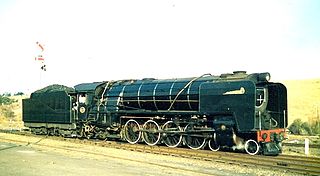
The South African Railways Class 15E 4-8-2 of 1935 was a steam locomotive.

The South African type YE tender was a steam locomotive tender from the pre-Union era in the Cape of Good Hope.
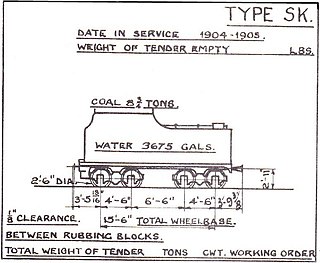
The South African type SK tender was a steam locomotive tender.

The South African type XF2 tender was a steam locomotive tender from the pre-Union era in the Cape of Good Hope.
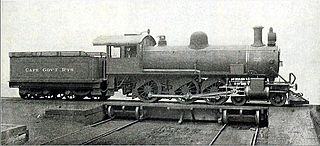
The South African type WE tender was a steam locomotive tender from the pre-Union era in the Cape of Good Hope.

The South African type XM4 tender was a steam locomotive tender.
The South African type LP tender was a steam locomotive tender.

The South African Railways Class 16DA 4-6-2 of 1930 is a class of steam locomotives.
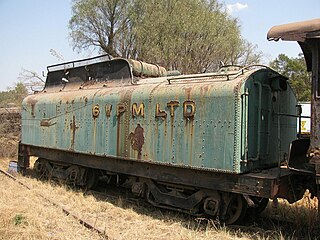
The South African type GT tender was a steam locomotive tender.
The South African type MS tender was a steam locomotive tender.

The South African type MT2 tender was a steam locomotive tender.

The South African type FT tender was a steam locomotive tender.

The South African type JV tender was a steam locomotive tender.
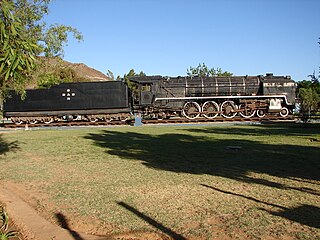
The South African type EW tender was a steam locomotive tender.

The South African type ET tender was a steam locomotive tender.
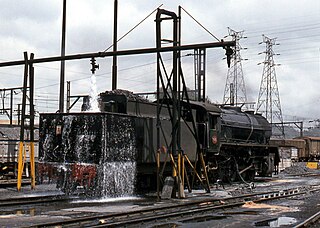
The South African type JT1 tender was a steam locomotive tender.
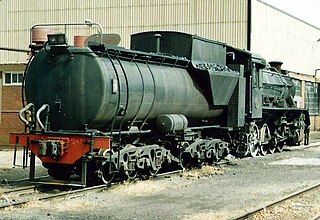
The South African type MY1 tender was a steam locomotive tender.
The South African type ET1 tender was a steam locomotive tender.

The South African type EW1 tender was a steam locomotive tender.
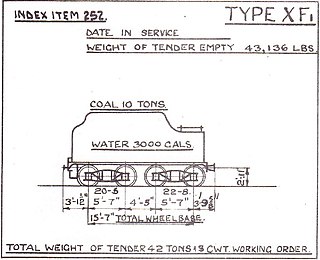
The South African type XF1 tender was a steam locomotive tender.



















